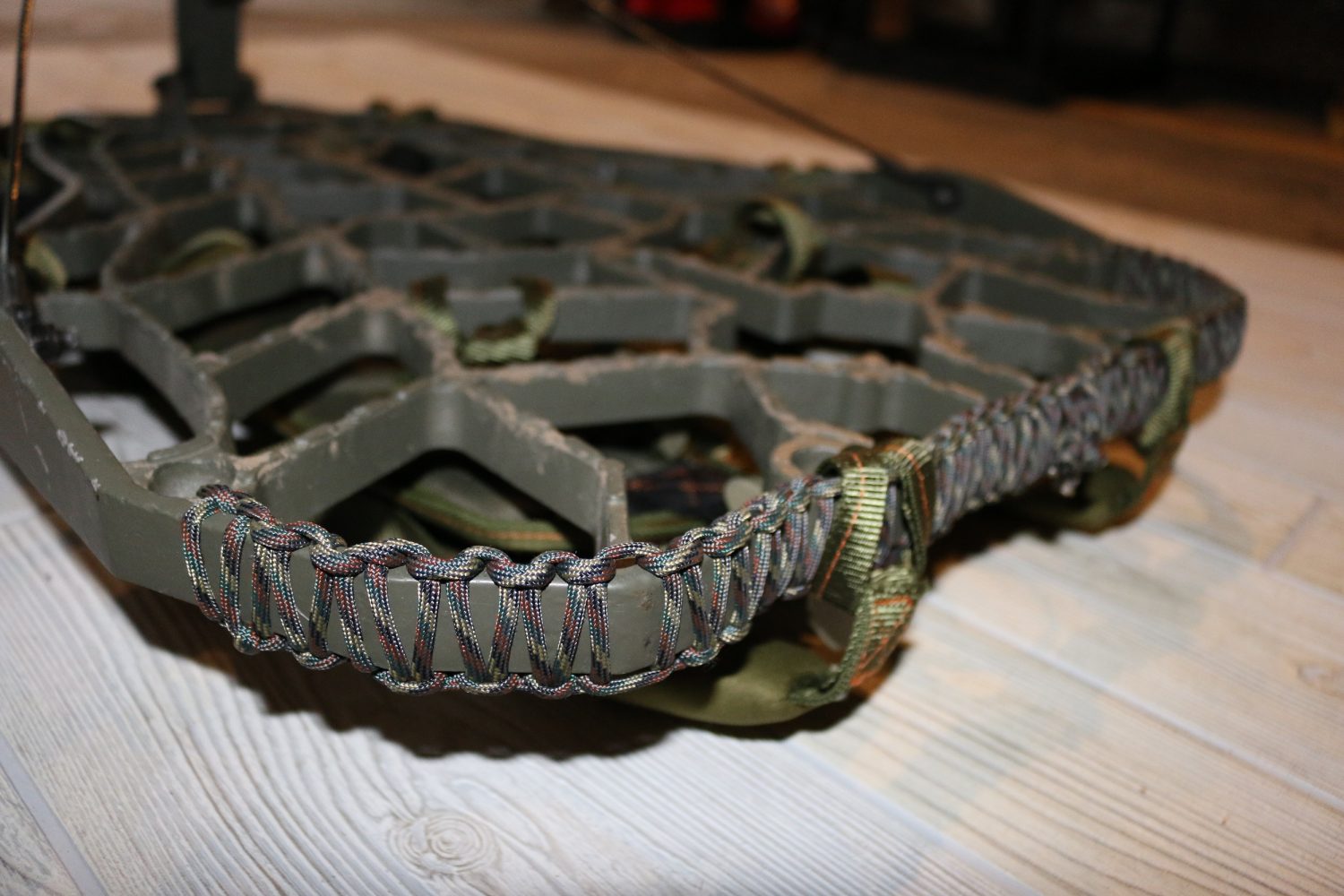Picture this…
Stand on your back, bow in hand, you make the mile-long hike back through a piece of beautiful public ground. With every meticulous footstep, you avoid snapping sticks and crunching leaves like it’s the plaque. One by one you inch closer to your spot just on the fringes of a known big buck bedding area. It wasn’t easy, but after an hour-long trek, you finally made it to the base of the tree. You’ve worked so hard to remain unnoticed up until this point, so don’t let your treestand be the one thing that busts you.
Nothing in the world is more cringe-worthy than that awful sound of hollow metal against metal on a crisp fall morning. And nothing says “HEY, DEER! I’M OVER HERE!” like that clank either. If you’re a run and gun type hunter like myself where hanging and pulling a stand every sit is commonplace, it’s in your best interest to go to great lengths to silence your treestand setup. For hunters that typically leave a stand in one spot all year, it’s not as crucial to have a silenced setup because you’re only making noise once while you hang it. From there, the treestand should be relatively silent other than the occasional squeak which can usually be remedied with a new nylon washer.
Now compare this to the guy who hang-and-hunts all season long, constantly transporting, hanging, and pulling their stand – there’s a lot of room for unwanted noise to occur. The way I look at it, there are three distinct periods during a hunt in which you need your stand to be absolutely silent: the hump in (aka while it’s on your back), the hang, and the hunt. The hump and the hang are by far the hardest to accommodate, as the hunt largely comes down to the stand quality and design.
The Hump In
The hump in is the hardest time to keep gear quiet. The nature of everything (climbing sticks, stand, gear, etc.) riding on your back as you hike in over deadfalls, thick brush, and steep slopes is a tough obstacle to silence. Basically you’re asking a heaping pile of metal to stay quiet on your back while it’s all strapped snuggly together. Yeah, right.
While the task is difficult, the solution is relatively easy – find the metal to metal contact points and put something (non-metal) between them. Voila, problem solved. Now, rather than boring you with text, I’ll provide some photos of my DIY silenced hang and hunt treestand setup and explain what/why I did what I did.
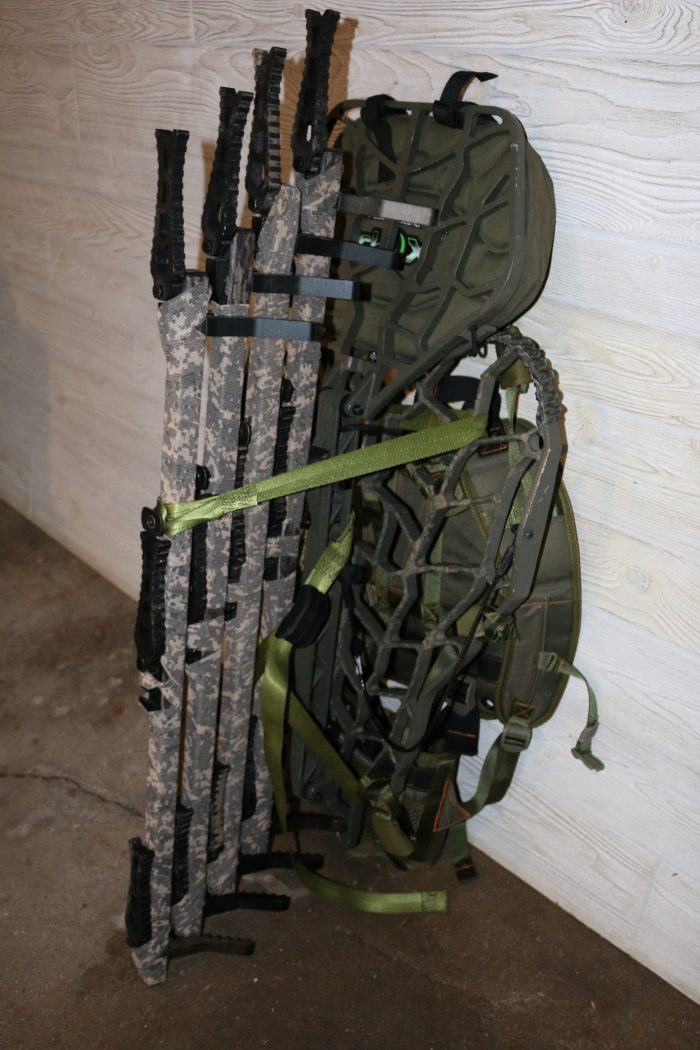
Before I get into breaking my setup down completely, here’s what it looks like all tied together before I head into the woods (minus some gear and what not). I chose to go with an XOP treestand setup for two main reasons: First, the stand is cast aluminum which keeps things light and more importantly, quiet. The cast aluminum stands are much quieter in all aspects of the hunt from dragging them through brush to maneuvering your clunky boots for a shot 20 feet up. The second reason I chose XOP was the locking stick system they brilliantly engineered. With a quarter turn of the middle step, each stick locks tightly into one another. This eliminates a ton of noise from the get-go as you don’t have to worry about trying to ratchet sticks together and have them remain tight throughout the length of the walk. I use an extra strap around my set during transport to relieve some of the pressure from the locking step bolt head, but I could just as easily take that top strap off and all the sticks would stay in place.
Thanks to the engineering and quality materials, the XOP stand and stick setup is pretty solid right off the shelf for a run and gun type hunter. However, there a few areas where metal inevitably contacts metal and it was my goal to eliminate these problem areas. My treestand silencing tools included paracord, a bicycle inner tube, camo equine wrap, and some clear ½” tubing. There are some other products I would like to try in the near future like the oft talked about Stealth Strips, but for now, the equine tape is doing a pretty decent job for the price.
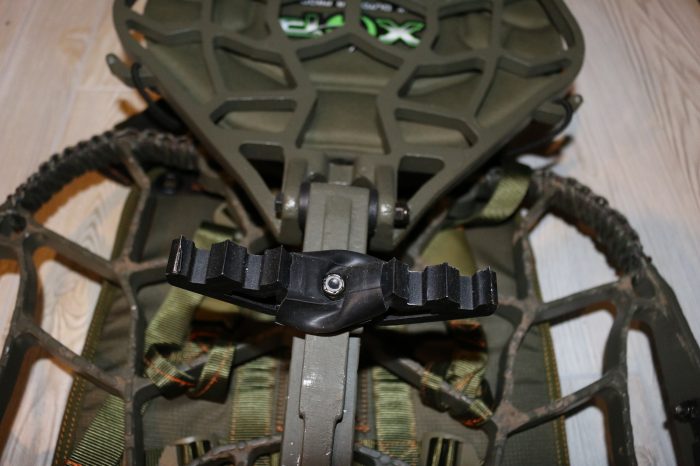 Adding the rubber tubing silenced the main point of contact between the sticks and the stand.
Adding the rubber tubing silenced the main point of contact between the sticks and the stand.
In the photo above, you can see a small piece of rubber bicycle inner tubing around the part of the stand that bites into the tree. A little bit of MacGyvering and strategic cuts allowed me to bolt the tree cleat back on safely while now having a rubber membrane between the metal of the cleat and the climbing sticks while in transport. The added tape to the sticks as you’ll see further down also creates a double barrier.
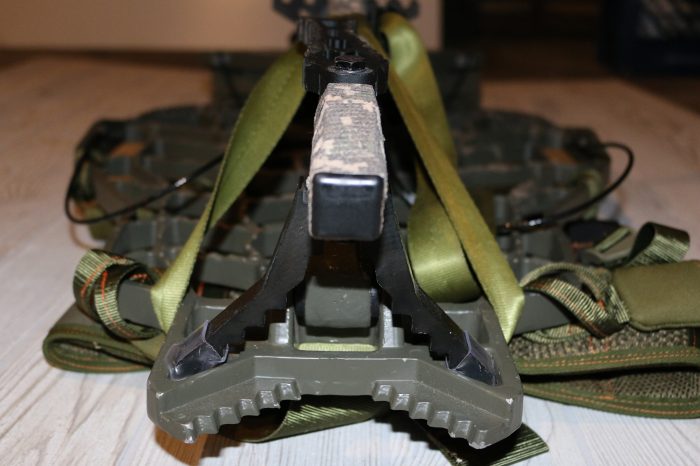
You can see how the stick rests and seats itself in the tree cleat nicely for transport and how the rubber between prevents the potential for noise during transport and while setting the stick in place after a hunt. The other area the stick comes into contact with the stand is at the bottom (pictured above), where the tree cleats on the sticks seat themselves perfectly into the grooves of the stand (another great engineering feature). I wasn’t sure how I was going to silence this area at first, but after some thought, I figured I could wedge some ½” tubing over the ends of the tree cleats on the stick so that when it rested on the stand the tubing would prevent that metal on metal contact.
It worked, but I did have some concerns about the safety of having rubber tubing on the tree cleats, as it prevents them from biting into the tree. Certainly, there’s a safety concern here as there are with most DIY tweaks and with that, I want to say Any modifications done are to be done at your own risk. To minimize the safety hazard, I make sure to use the stick with tubing as my first stick…a fall from 3 feet is much better than one from 15’.
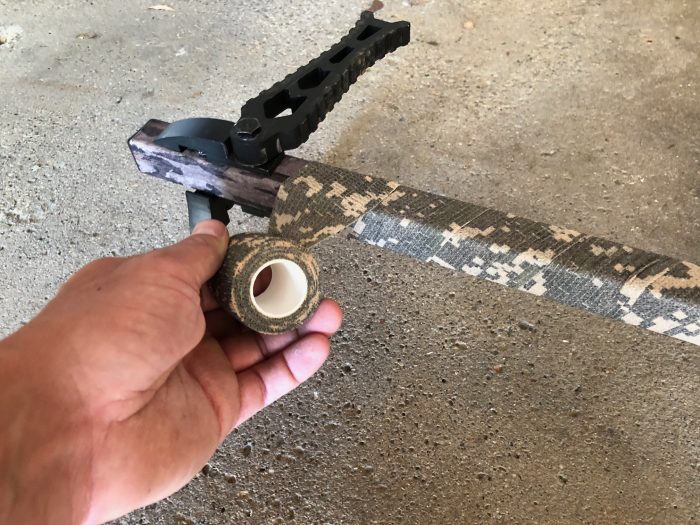
I thought long and hard about purchasing the Stealth Strips to cover my XOP climbing sticks, but in the end I went with the cheaper option. After hunting a season without anything on them, I can already tell the foam self adhesive equine tape will be a welcomed addition this fall. The tape certainly dampens any noise from brush and other equipment that may contact them and that’s huge since they are made from hollow tubing. I can’t report on the durability yet, but even if I have to re-wrap them each season it’s worth it considering the 3 rolls of tape only cost me $10 on Amazon. But who knows, maybe I’ll try the Stealth Strips eventually. As a bonus, having the tubes wrapped keeps your hands warmer when handling the sticks in cold temps!
The Hang
Strap cam buckles are one of those things that no matter how hard you try to keep from clanking against metal, they always find their way to an ear shattering “CLINK”. Attached to a free swinging strap which sometimes requires a soft toss around the backside of a big tree into your blind hand, these puppies always come back with a vengeance if you don’t catch it. This is precisely why you need to cover the cam buckles in some sort of sound dampening material. I chose to use bicycle tire inner tubing cut in small 2-3 inch pieces to cover the metal buckles completely. Plenty of other hunters on the inner webs have used the aforementioned Stealth Strips or even neoprene kayak paddle grips to silence cam buckles. Personally, I think the inner tube works great and it doesn’t hinder the operation of the cam buckle at all. As you can see, it’s really pretty simple – cut it to length and make an undercut that allows the strap through and you’re good as gold. No more clanking cam buckles.
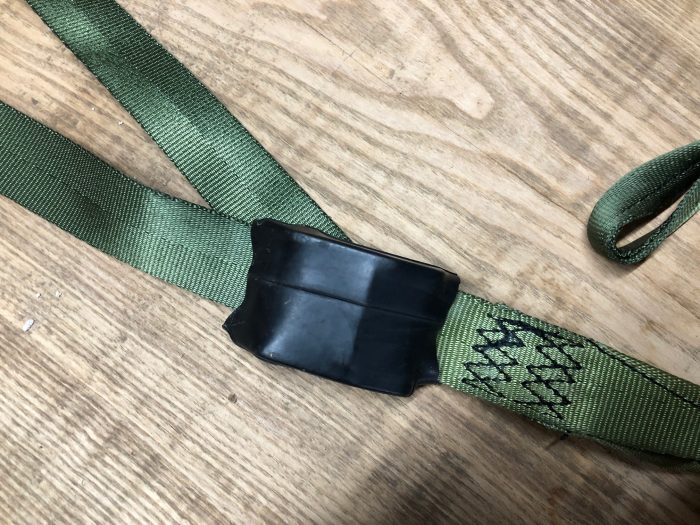
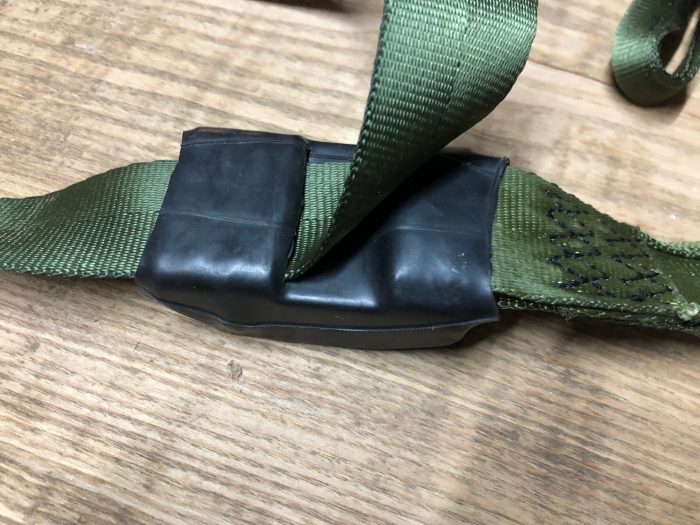 The inner tubing fits nice and snug over the metal buckle and still allows it to function properly and easily with a backside cut in place.
The inner tubing fits nice and snug over the metal buckle and still allows it to function properly and easily with a backside cut in place.
The Hunt
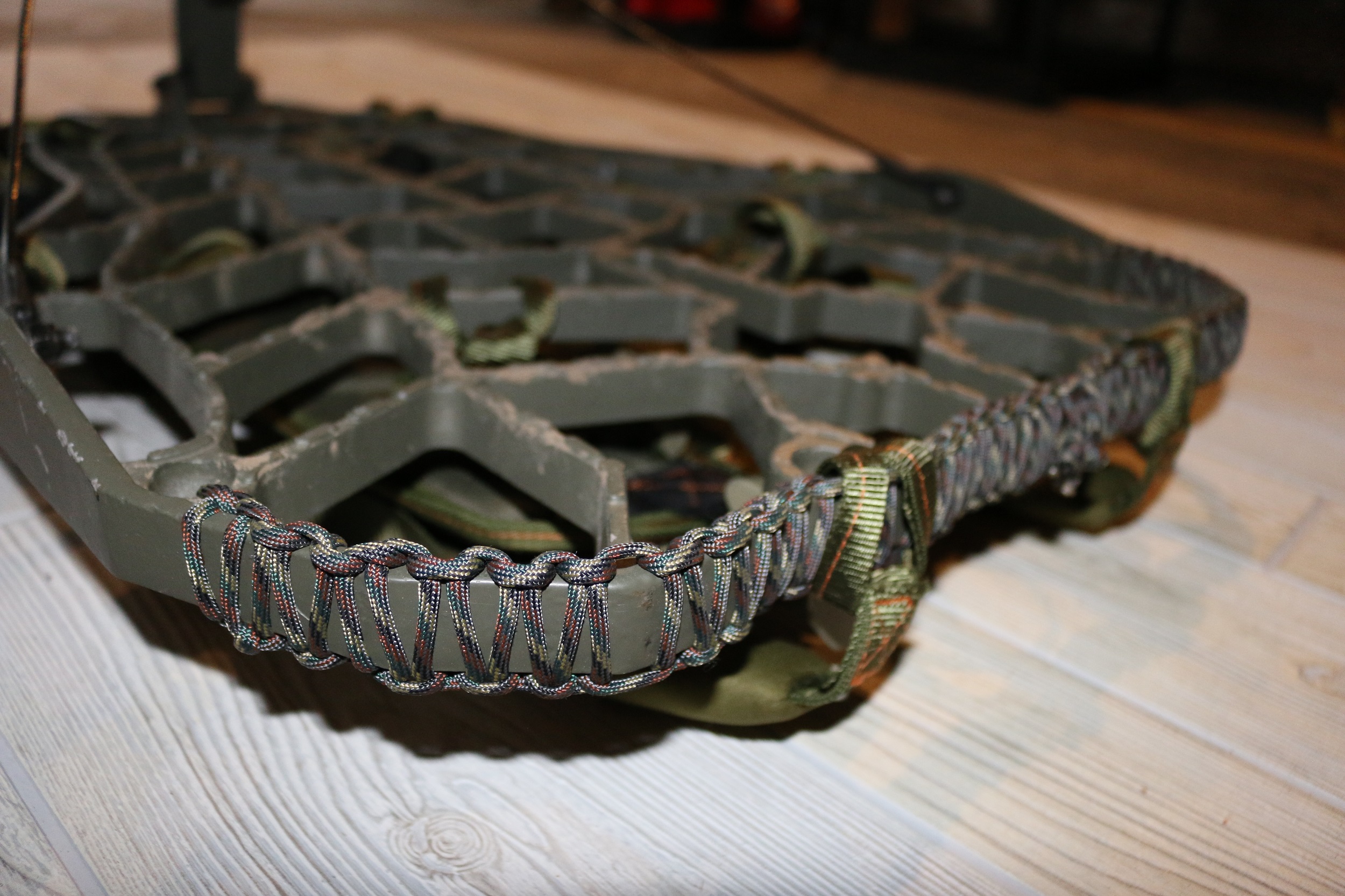
The paracord webbing along the front edge of the stand certainly looks cool, but I’m not sure I needed it after the fact. You see, XOP has a neat seat pad design that allows it to flip and hook over to either side of the seat. So when you are hunting it’s obviously on top, but when you pull it down and pack it up, you can swing the pad around which creates the perfect noise buffer between the metal seat/stem and the metal base. I saw this webbing video on YouTube from DIY Sportsman, and went right to town on webbing the front of my stand, only to realize I probably didn’t need to. Regardless, a second line of defense is never a bad thing and it also helps you feel where the edge of the stand is with boots on.
In the end, I’m sure I’ll continue to find problem areas, but for now I would say my setup is getting as close to silent as possible. One thing to note before I wrap this article up is the use of plastic bungees and rubber gear ties. They help hold everything in place nice and snug, especially when you attach a gear bag or other hunting accessories to your stand for the hike in.





